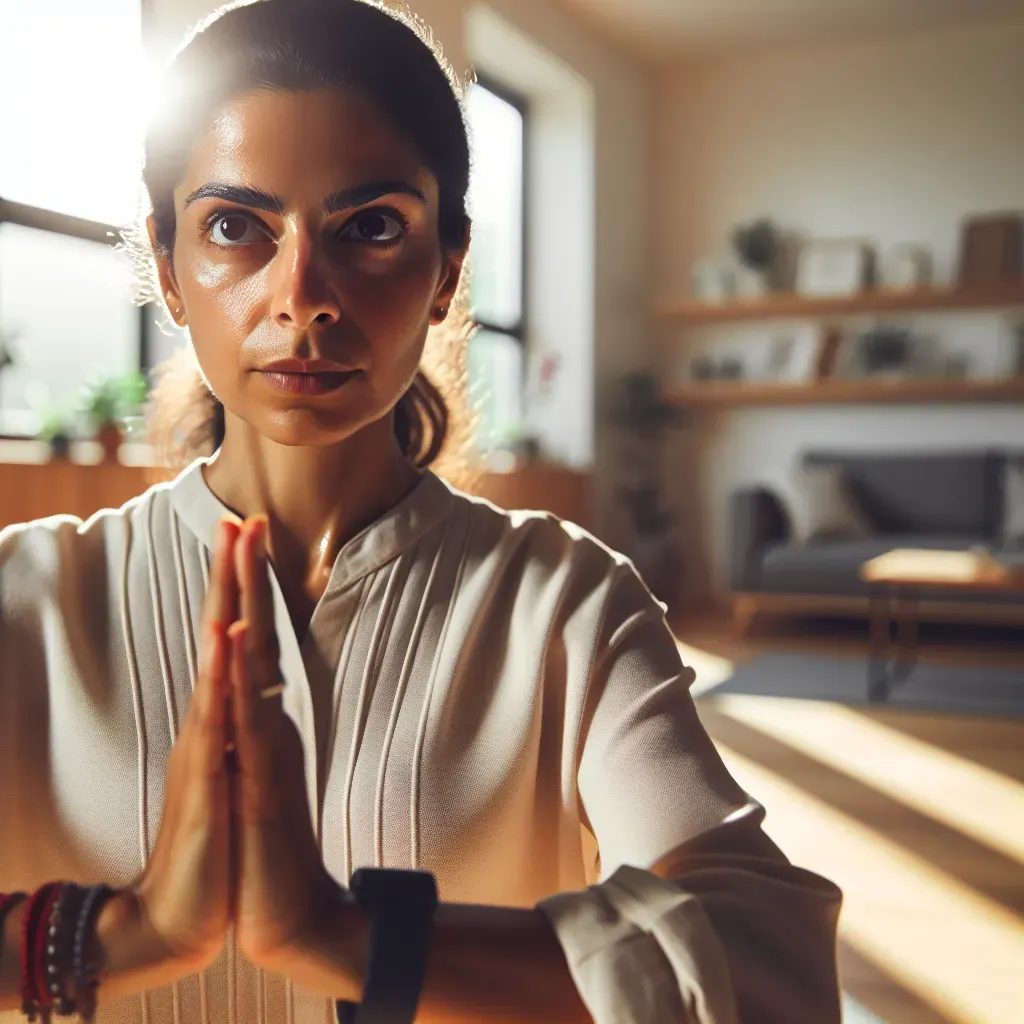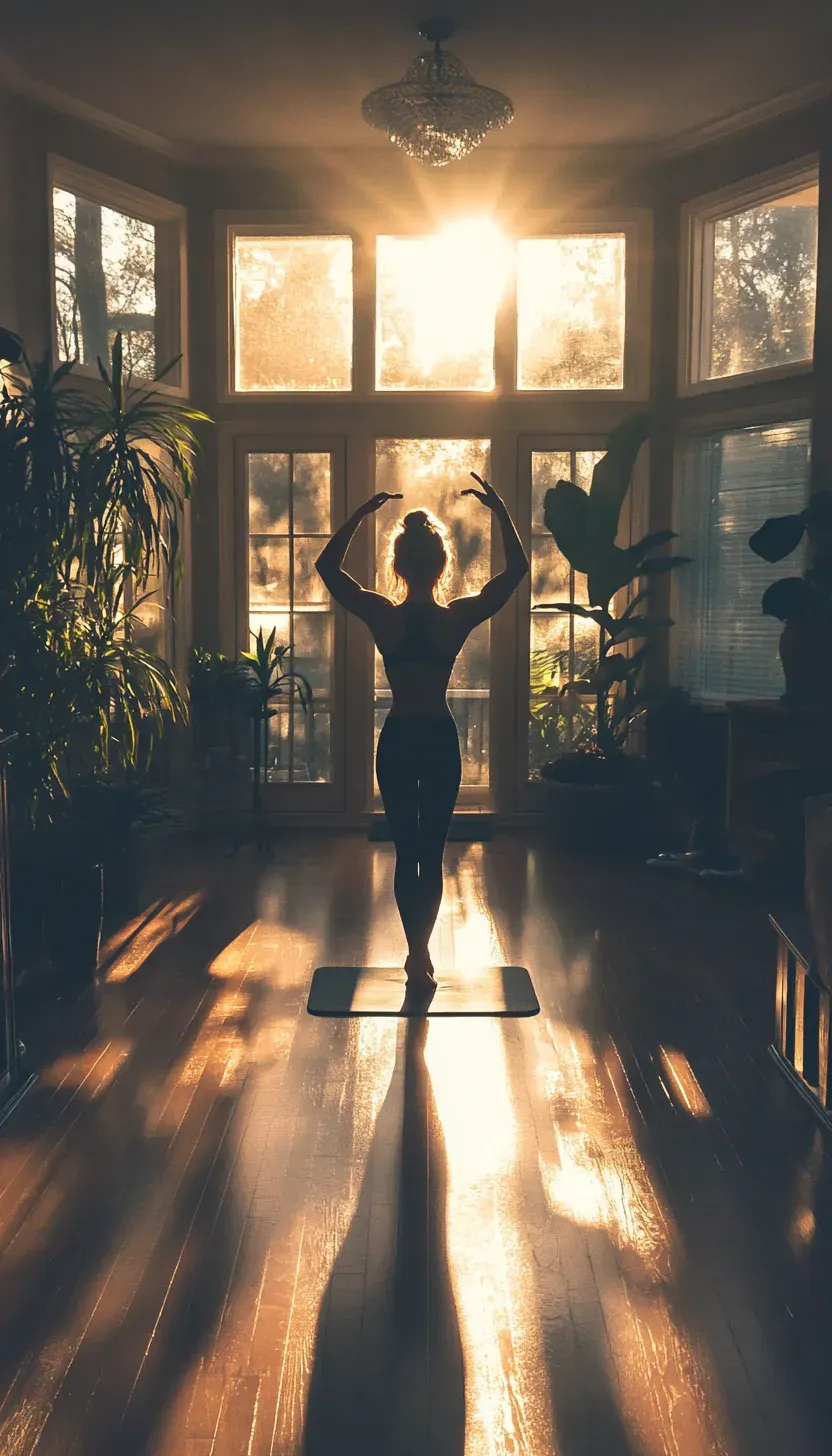What Is The True Meaning Of Dynamic Yoga? A Beginner’s Guide
Table of Contents:
- Introduction to Dynamic Yoga
- Understanding Dynamic Yoga Basics
- What Makes Dynamic Yoga Different?
- Principles of Dynamic Yoga Practice
- Physical and Mental Benefits of Dynamic Yoga
- How Dynamic Yoga Compares to Other Styles
- Essential Poses in Dynamic Yoga
- Tips for Dynamic Yoga Beginners
- Preparing Your Space for Dynamic Yoga
- Finding the Right Dynamic Yoga Class
- Embracing Your Dynamic Yoga Journey
Understanding The Meaning Of Dynamic Yoga Basics

Dynamic yoga is more than just a series of physical postures; it's an evolving practice that harmonizes movement with breath, creating a fluid dance between the body and mind.
At its core, dynamic yoga encourages practitioners to embrace change, both on and off the mat. This approach cultivates resilience, adaptability, and self-awareness as students learn to navigate their inner landscapes while flowing through various sequences.
Understanding dynamic yoga basics opens up a realm of possibilities for beginners. It invites them to explore the nuances of their bodies in motion realizing that each inhale can inspire expansion, while each exhale offers release.
This interplay fosters mindfulness, teaching practitioners to stay present amid life’s unpredictability.
As you delve deeper into dynamic yoga, you will uncover layers of strength and grace that extend far beyond traditional fitness routines, empowering you to engage fully with every aspect of your being.
Dynamic Yoga Meaning And Definition Explained
Dynamic Yoga is more than just a physical practice; it embodies a flowing sequence of movements that synchronize breath with action.
This style of yoga emphasizes fluidity, encouraging practitioners to seamlessly transition from one pose to another, cultivating both strength and grace.
Unlike static styles that hold postures for extended periods, Dynamic Yoga invites you to explore your body’s limits in real time, fostering a deeper connection between the mind and body.
At its core, Dynamic Yoga encapsulates the essence of adaptability. Each session can feel different depending on the rhythm set by the instructor or your energy levels on any given day.
This adaptability not only makes each class unique but also empowers students to listen to their bodies and adjust their practice accordingly.
As you flow through various asanas, you might find moments of meditation amidst the movement an opportunity to cultivate mindfulness while embracing change.
Thus, Dynamic Yoga serves as an invitation not only to strengthen your muscles but also to enrich your mental resilience in an ever-evolving world.
Key Principles Behind The Meaning Of Dynamic Yoga Practice
Dynamic yoga emphasizes the fluidity of movement, creating a seamless connection between breath and motion.
This practice is rooted in the belief that energy flows more freely when we engage our bodies through dynamic sequences, promoting not just physical strength but also mental clarity.
Each movement becomes an expression of life itself a dance that invites practitioners to explore their limits while remaining present in the moment.
At its core, dynamic yoga is about balance; it's a constant interplay between effort and surrender. This balance encourages students to listen to their bodies, recognizing when to push forward and when to ease back, cultivating a deeper understanding of one’s own needs.
As they navigate through challenging poses with grace and intention, practitioners often discover resilience not only on the mat but in everyday life an empowering realization that the lessons learned during practice extend far beyond its confines.
Ultimately, dynamic yoga serves as a transformative journey that integrates mind, body, and spirit into one cohesive experience.
Benefits That Define The Meaning Of Dynamic Yoga
Dynamic Yoga goes beyond physical movement, embodying a holistic approach that nurtures the mind and spirit alongside the body. One of its most profound benefits is the cultivation of mindfulness through fluid motion.
As practitioners transition seamlessly between poses, they develop a heightened awareness of their breath and body sensations, fostering a deeper connection to their present experience.
This not only enhances physical performance but also encourages mental clarity, enabling individuals to navigate daily challenges with increased focus and resilience.
Moreover, Dynamic Yoga promotes adaptability both on and off the mat. The varied sequences encourage participants to flow with change, teaching them how to embrace uncertainty in life’s unpredictability.
Each class becomes an exploration of strength, flexibility, and balance; this practice empowers students to break free from limitations and discover new strengths within themselves.
With each session, individuals gain greater insight into personal capabilities while learning to respect their unique journeys in wellness and self-discovery.
Differences Between The Meaning Of Dynamic Yoga And Other Styles
Dynamic yoga stands apart from other styles through its emphasis on flow and movement, creating a seamless dialogue between breath and body.
Unlike traditional Hatha yoga, which often focuses on holding postures for extended periods, dynamic yoga typically connects asanas in a more fluid sequence.
This constant movement not only enhances physical strength and flexibility but also invites practitioners to engage their minds in real-time alignment with each transition.
In contrast, styles like Yin or restorative yoga prioritize stillness and deep relaxation, allowing the body to release tension over time.
While these approaches cultivate mindfulness in quieter moments, dynamic yoga ignites an energetic awareness that can challenge both beginners and seasoned yogis alike.
The energy generated through this vigorous flow acts as a moving meditation a transformative experience that can lead to heightened self-awareness and personal growth beyond the mat.
Embracing the rhythm of dynamic practice encourages practitioners not just to feel their bodies but also to listen deeply to their internal rhythms, making it a compelling choice for those seeking an invigorating blend of motion and mindfulness.
Common Poses That Capture The Meaning Of Dynamic Yoga
Dynamic yoga is often characterized by its fluid movements and the seamless transitions between poses, which embody the rhythm of breath and energy in practice.
Among the myriad of postures that vividly illustrate this dynamic essence, Sun Salutations stands out. This series of poses not only warms up the body but also serves as a rhythmic dance that connects movement with intention.
Each flow from Mountain Pose to Upward Dog acts like brush strokes on a canvas, inviting practitioners to set an energetic tone for their practice.
Another pivotal pose is the Warrior II, symbolizing strength and grounding while simultaneously embracing openness and adaptability. As you hold Warrior II, feel how your lower body connects firmly to the earth while your arms extend wide, representing both stability and readiness to face whatever comes next a perfect metaphor for life’s challenges.
Additionally, incorporating transition poses like Flowing from Downward Dog into Plank highlights dynamic yoga’s core principle: adaptability in motion.
These powerful flows remind us that yoga isn’t solely about achieving static positions; rather, it captures life's ebb and flow through continuous movement marked by grace and awareness. Embrace these poses as invitations to explore your inner dynamism.
Tips For Beginners Exploring The Meaning Of Dynamic Yoga
When stepping onto the mat for the first time, beginners delving into dynamic yoga should embrace a mindset of curiosity. This practice is not merely about physical postures; it encourages deeper self-exploration and awareness.
As you flow through sequences, focus on synchronizing breath with movement, creating a rhythm that enhances both physical and mental agility. Each inhale invites energy; each exhale promotes release allowing these sensations to guide your journey.
Start by cultivating a consistent practice rather than striving for perfection in every pose. Allow yourself the freedom to experiment with different flows and variations until you find what resonates with your body and spirit.
Listening to your body's needs can lead to profound insights about your strength and flexibility qualities that extend beyond the mat into everyday life.
Remember, it’s okay to modify poses or rest when needed; honouring your limits is an essential part of the growth in dynamic yoga, setting the foundation for greater confidence as you progress.
Preparing Your Space For Practicing Dynamic Yoga
To create an optimal environment for practicing dynamic yoga, focus on decluttering your space, allowing energy to flow freely. A dedicated area whether a corner of your living room or a serene outdoor spot can significantly enhance your practice.
Consider using natural light and fresh air to invigorate the atmosphere; open windows or use soft lighting to foster a sense of tranquillity and connection with nature.
In addition to physical space, the emotional ambience is equally important. Play calming music or nature sounds subtly in the background to deepen your experience and help you maintain focus during transitions between poses.
Incorporating elements like plants or soothing scents can also elevate your practice; scents such as eucalyptus or lavender stimulate awareness and promote relaxation, grounding you in each movement as you explore dynamic sequences.
Ultimately, your space should reflect both comfort and inspiration encouraging not just a workout but a holistic journey that nurtures both body and mind.
Finding The Right Dynamic Yoga Class Or Instructor
When searching for the right dynamic yoga class or instructor, consider the unique energy and flow each teacher brings to their sessions.
Not all instructors approach dynamic yoga in the same way; some may integrate enriching storytelling and philosophy into their sequences, while others might focus on high-intensity movements that challenge your physical limits.
Take the time to attend various classes and observe how each instructor's teaching style resonates with you whether you prefer a more nurturing environment or one that sparks a competitive spirit.
Additionally, look beyond traditional studio settings. Sometimes unconventional spaces like community centers or outdoor settings can offer refreshing perspectives on dynamic yoga.
These environments often cultivate a more inclusive and laid-back atmosphere, allowing you to connect with both nature and fellow practitioners on a different level.
Remember, finding the right fit is about personal resonance; trust your instincts when it comes to choosing an instructor whose passion ignites yours the experience should be as much about self-discovery as it is about mastering poses.
Embracing The True Meaning Of Your Dynamic Yoga Journey
As you conclude your exploration of dynamic yoga, it's important to recognize that this journey is as much about self-discovery as it is about physical practice.
Each pose invites you to listen to your body and cultivate a deeper awareness of your capabilities and boundaries.
By embracing the fluidity of movement, you unlock not only strength and flexibility but also the resilience needed to navigate life's unpredictabilities.
Dynamic yoga encourages us to let go of rigid expectations and instead flow with our rhythms. This adaptability enriches our connection to ourselves and others, fostering a sense of community within a shared practice.
Ultimately, the true meaning lies in how you integrate these lessons on the mat into everyday life approaching challenges with grace, breathing through discomfort, and celebrating your unique progress without comparison.
As you continue on this path, let dynamic yoga be more than just exercise; allow it to become a powerful tool for transformation that transcends into every aspect of your being.
For more practical applications. Check out Beginner’s Guide To Dynamic Yoga: Energizing Poses And Benefits
People Also Ask Section
- What is Dynamic Yoga?
- Dynamic Yoga is a yoga style focused on fluid movements, connecting breath and motion to build strength and mindfulness.
- Is Dynamic Yoga good for beginners?
- Yes, Dynamic Yoga is suitable for beginners, promoting adaptability, strength, and mindfulness.
- How does Dynamic Yoga differ from Hatha Yoga?
- Dynamic Yoga involves continuous movement between poses, while Hatha Yoga emphasizes holding poses longer.
- What are the benefits of Dynamic Yoga?
- Dynamic Yoga improves physical flexibility, strength, mental clarity, and adaptability.
- What poses are common in Dynamic Yoga?
- Common poses include Sun Salutations, Warrior II, and transitions between Downward Dog and Plank.
- Can Dynamic Yoga help with stress?
- Yes, by connecting movement and breath, Dynamic Yoga reduces stress and increases mental resilience.
- What do I need for a Dynamic Yoga class?
- You'll need a yoga mat, comfortable clothing, and an open space with natural lighting if possible.
- How long should a Dynamic Yoga session last?
- A typical session lasts 45 minutes to an hour, but even shorter practices can be effective.
- Are there specific breathing techniques in Dynamic Yoga?
- Yes, breath synchronization with movement is a core aspect, using breath to guide transitions.
- What should beginners focus on in Dynamic Yoga?
- Beginners should focus on fluidity, breathing, and tuning into their body's needs and limits.





